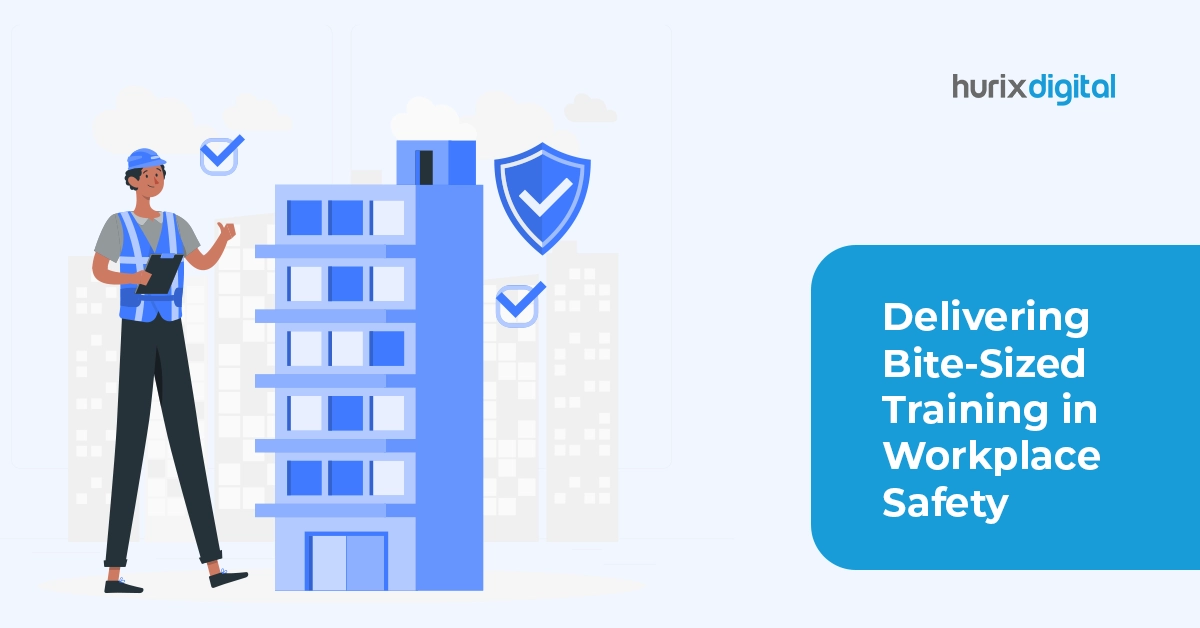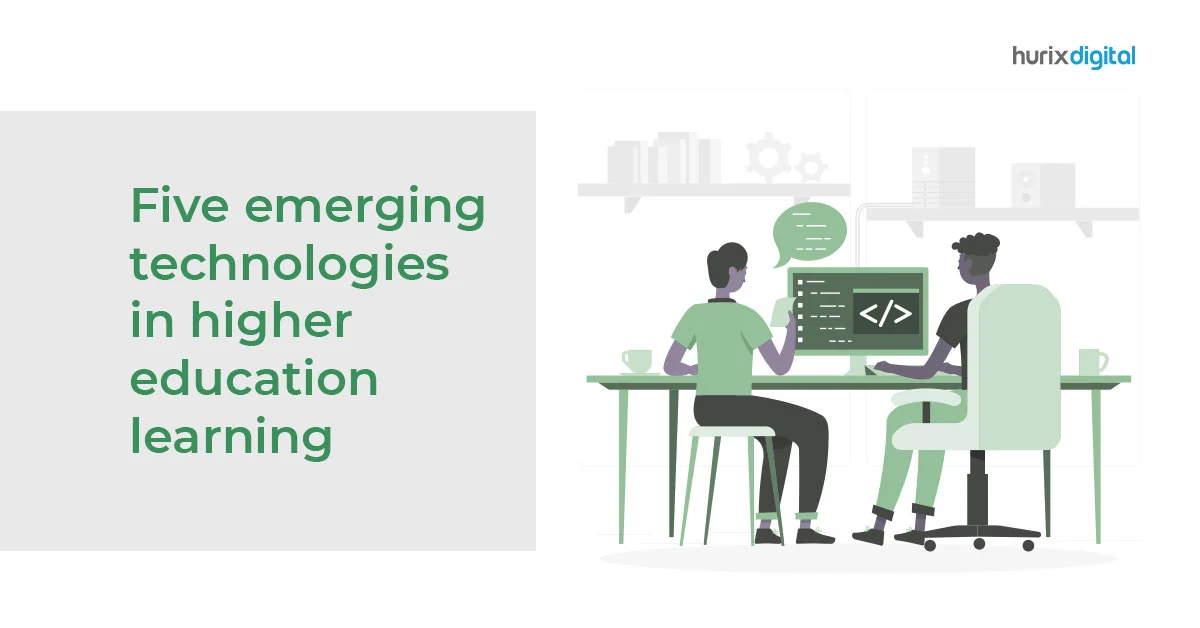
How to Create and Deliver Bite-Sized Learning for Enterprise Training
[vc_row][vc_column][vc_column_text]The advent and the ever-increasing use of smartphones have changed the way people access and consume their information, prompting changes in the way learning and training are delivered in organizations.
Training and learning content is increasingly being designed in the form of bite-sized nuggets that can be accessed and consumed by people on the move, anytime and anywhere on their smartphones or any other platform of their choice.
This blog helps you know what is bite-sized learning, how to choose the correct bite-sized learning platform for you, and the advantages of the same.[/vc_column_text][vc_video link=”https://www.youtube.com/watch?v=bpnAWFJah-g”][vc_custom_heading text=”Advantages of Bite-Sized Learning for Enterprise Training and Learning & Development (L&D).” font_container=”tag:h2|font_size:18|text_align:left” google_fonts=”font_family:Lato%3A100%2C100italic%2C300%2C300italic%2Cregular%2Citalic%2C700%2C700italic%2C900%2C900italic|font_style:900%20bold%20regular%3A900%3Anormal” css=”.vc_custom_1690961025254{margin-top: 0px !important;margin-bottom: 0px !important;border-top-width: 0px !important;border-bottom-width: 0px !important;padding-top: 0px !important;padding-bottom: 10px !important;}”][vc_column_text]
1. To-the-Point Learning:
Bite-sized learning is also known as micro-learning. Each nugget is around 3 to 5 minutes long which means that you can’t cram it with a lot of information. The bite-sized learning content answers a specific question, for example, how to remove passwords from your PDF file.
The nugget will not provide any contextual information about the subject like what are PDF files and why they are password-protected. Rather it will dive right into the topic and take you through the steps involved in permanently unlocking your file. As is clear from the example, bite-sized content is a specific answer to a specific question.
There is no meandering away from the subject under discussion. Bite-sized content is of particular use to the decision-makers, sales personnel, and other such employees who need immediate access to a specific query to support their decision-making.
2. More in Tune with Modern Pedagogical Practices:
The millennial generation is spoilt for information. With so many distractions claiming attention, it becomes imperative to provide learning in small bite-sized packages which attention-challenged and time-challenged learners can consume and assimilate in a short time frame.
3. Multisensory Learning Experience:
Since bite-sized learning is very specific and focused on providing very condensed information on a subject, multimedia elements are liberally used to reinforce the concepts.
So, taking forward the example of removing a password from a PDF file, bite-sized learning, in this case, can be in the form of a video demonstrating the process, audio in the background explaining how it is done, and then a list of the steps to reinforce the process. So, with bite-sized content, you can see learning in action, and this makes for better grasping and retention.
4. Reinforcing Learning:
It is generally observed that people tend to forget 80% of what they have learned over 30 days if that information is not revisited or put to use again and again. Bite-sized learning simplifies revisiting the concepts and thus is a great way to address the challenges of the forgetting curve.
Also, since these bite-sized nuggets are specific and in formats that include graphics, audio, video, infographics, etc., they are less intimidating to the learners than long lessons in the text-only format.
5. Personalized Learning:
Bite-sized learning nuggets are focused on answering specific queries, implying that organizations can harness them to provide personalized learning experiences. This will create more interest in learning, enabling employees to upgrade their skills.
Besides, this form of learning also helps to provide a more level playing field to all team members, who may otherwise not be able to follow lessons in traditional settings at the same pace or with the same level of understanding.
6. Empowering Learners:
Micro-learning or bite-sized content nuggets are empowering for the learners as they can learn at their own pace and gain answers to their specific queries at the time when they want the answers or information. Thus, bite-sized learning makes for a great performance support tool, allowing learners to better perform their jobs, convert a lead into a sale or take the right decision at the right time.
7. Exploring New Horizons:
Mobile technology is very empowering as users can access a sea of information with a few clicks of a mouse. As mentioned earlier, bite-sized learning is very content-specific in that each nugget encapsulates very condensed information about a particular subject.
And while this may hold good for the learner who is challenged for time, there might be other moments when the users have time at hand, and they may want to further increase their knowledge on the subject. Micro-learning makes full use of technology, linking bite-sized learning content to various digital networks, communities, and content resources which the learners can use to further build on their knowledge.[/vc_column_text][vc_custom_heading text=”Creating and Delivering Bite-sized Learning for Enterprise Training” font_container=”tag:h2|font_size:18|text_align:left” google_fonts=”font_family:Lato%3A100%2C100italic%2C300%2C300italic%2Cregular%2Citalic%2C700%2C700italic%2C900%2C900italic|font_style:900%20bold%20regular%3A900%3Anormal” css=”.vc_custom_1567773379199{margin-top: 0px !important;margin-bottom: 0px !important;border-top-width: 0px !important;border-bottom-width: 0px !important;padding-top: 0px !important;padding-bottom: 10px !important;}”][vc_row_inner css=”.vc_custom_1566825552890{margin-bottom: 0px !important;border-bottom-width: 0px !important;padding-bottom: 5px !important;background-color: #ecedef !important;}”][vc_column_inner width=”2/3″][vc_column_text css=”.vc_custom_1566825660171{margin-top: 20px !important;margin-left: 5px !important;}”]
How to Guide:
How to Choose the Right LMS for Your Business
[/vc_column_text][/vc_column_inner][vc_column_inner width=”1/3″ css=”.vc_custom_1566825644666{padding-top: 40px !important;padding-right: 20px !important;padding-bottom: 40px !important;}”][button size=”mediumlarge_rd_bt” use_icon=”yes” icon_position=”bt_icon_right” icon_color=”#ffffff” t_color=”#ffffff” b_color=”#f16051″ b_hover_color=”#1b9ed9″ url=”https://hurix.com/how-to-guides/how-to-choose-right-lms-for-business/” target=”yes” position=”ta_right” icon=”wb-download”]Download Now![/button][/vc_column_inner][/vc_row_inner][vc_column_text]
- Identify your Learning Goals: Since bite-sized learning is personalized, it is important that you first understand the learning goals – Do you want the modules to provide performance support, supplement classroom, online, or ILT learning, or enable informed decision-making? You may also wish to take your employees on board to understand their knowledge gap areas and create nuggets more suited to their needs.
- Keep it Short: Bite-sized learning content should be very concise, not more than 3 to 5 minutes. Focus on one idea at a time and ensure that the information you provide is complete in itself such that it answers all learner’s queries and they don’t have to wade through unnecessary information to find what they are looking for. This holds true for performance support and decision-making. The other reason to keep it short is so that the learners can go through these nuggets during their free time – between meetings, during coffee breaks, or while commuting. Provide links to social media, online communities, and other content resources so that they can look for additional information if they require it or connect with other members for discussions.
- Understand your End-learners’ Learning Styles: Once again, take your employees into confidence to understand what type of technology they are most comfortable with to deliver bite-sized learning. There are various media types you can harness to create your micro-nuggets, for example, audio, video, graphics, infographics, and the more advanced ones like animations and simulations.
- Study your Design Options: It is a good idea to match the format with the type of content and also with your budget. You may also talk to your in-house content developers or if you are outsourcing, to the eLearning content developers on the best formats for your content type.
- Ensure Usability Across Platforms: People consume their content on all types of platforms – laptops, PCs, tablets, and mobiles, so make sure that your content is easy to access on all platforms and is available both offline and online.
- Use an LMS to Create Your Bite-Sized Learning Content: Instead of investing in an LMS, you can use third-party LMS solutions to create small bite-sized content and enrich it with various media types. You can also add evaluation tools to understand if your modules are meeting their requirements, and accordingly modify your content for better outcomes. For the best returns on your investment, do thorough research on the LMS vendors and choose one with a wide experience and more specifically in your area of specialization.
Related:
How to Implement Microlearning in Corporate Training
5 Reasons to Integrate Microlearning in Mobile Learning Strategy!
Microlearning Design Techniques for a Great Learning Experience[/vc_column_text][/vc_column][/vc_row][vc_row][vc_column][/vc_column][/vc_row]

A highly enthusiastic and motivated sales professional with over twenty five years of experience in solution selling of training-related applications and services. Maintains an assertive and dynamic style that generates results. Ability to establish long-term relationships with clients built on trust, quality of service and strategic vision. Specializes in financial services, higher ed, publishing and government in the areas of learning and development.










